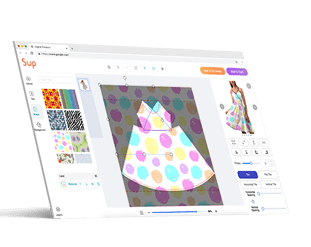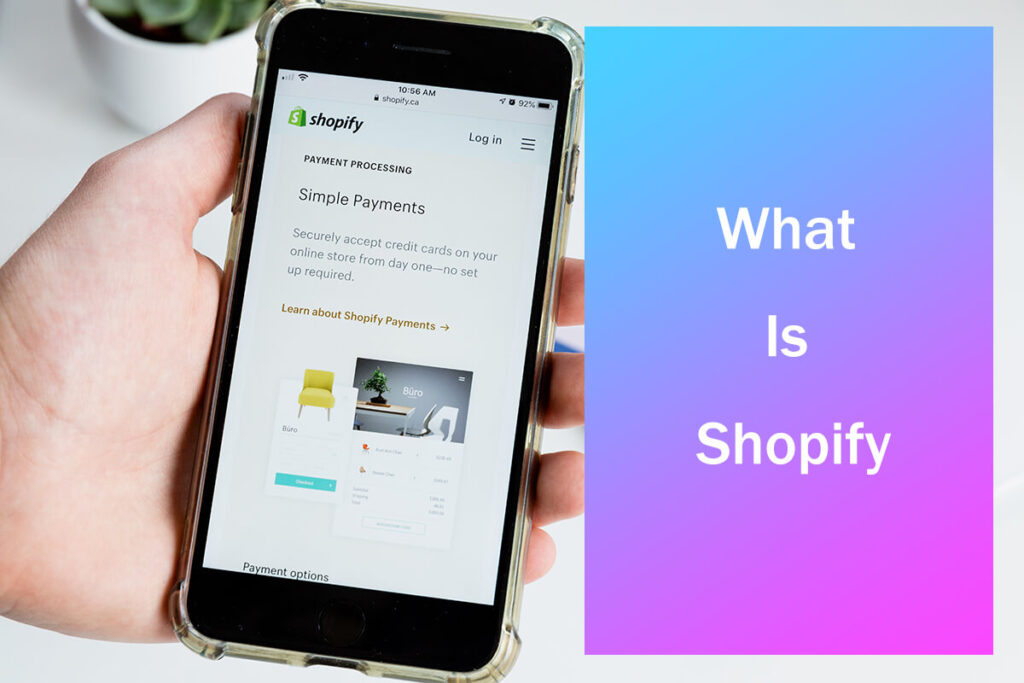4 Proven Approaches for Selling on Amazon Without Inventory
Setting up an e-commerce business on Amazon can be quite challenging. Complicated procedures often make it overwhelming and frustrating. But what if you could eliminate the hassle of product storage, warehousing, packaging, and shipping? Selling without inventory sounds pretty appealing, right?
In this blog, we’ll explore four ways to sell on Amazon without holding inventory.
Selling without inventory vs traditional e-commerce selling
As the name suggests, selling without inventory means you don’t have to store a large number of products in a warehouse. Instead, you can focus on other aspects of your business without the stress of managing inventory. Let’s compare selling without inventory to traditional e-commerce selling.
| Aspect | Selling Without Inventory | Traditional E-commerce Selling |
| Initial Investment | Lower costs, no need to buy stock upfront. | Higher costs due to purchasing inventory. |
| Risk of Unsold Products | Minimal risk; no unsold inventory to manage. | Higher risk of leftover products and storage fees |
| Management | Less management is needed; focus on marketing. | Requires inventory management and logistics. |
| Flexibility | Highly flexible; easy to adapt to trends. | Less flexible; tied to existing stock. |
| Customer Experience | Dependent on suppliers for shipping and quality. | Full control over product quality and shipping. |
| Time Commitment | Can be done from anywhere; less time-consuming. | Requires more time for managing stock and orders. |
How to sell on Amazon without inventory: 4 proven ways
Now that you understand the benefits of selling on Amazon compared to traditional e-commerce, let’s dive into the various ways you can do it.
1. Dropshipping
With dropshipping, you can sell products without ever keeping them in stock. When a customer places an order, that order goes directly to the supplier, who handles the packaging and shipping straight to your customer. Essentially, you act as the middleman—your customers don’t even know the suppliers exist.

Pros of dropshipping
- No upfront inventory costs: You won’t have to invest in products before making sales.
- Wide Product Range: You can offer a diverse selection of products without the worry of storage.
- Flexibility: You can run your business from anywhere, as there’s no need for a physical store or warehouse.
Cons of dropshipping
- Limited Control Over Shipping: You rely on suppliers to fulfill orders, which can lead to delays or issues that impact customer satisfaction.
- Quality Control Issues: Since you don’t handle the products yourself, you may face challenges with product quality and consistency.
- Amazon’s Strict Policies: If you don’t adhere to Amazon’s dropshipping rules, you risk account suspension or other penalties.
How to start Amazon dropshipping
1. Create an Amazon seller account
Start by signing up on the Amazon Seller Center. Fill out all required information, including your business details and payment information.

2. Find a Supplier
Partner with reliable suppliers who are willing to dropship their products for you. Establishing a solid relationship with your supplier can significantly impact your business success.
3. List Products
Once you have chosen your suppliers, create appealing product listings in your Amazon store. Focus on writing engaging descriptions that highlight key features and benefits. Use high-quality images and set competitive prices to attract potential buyers.
4. Receive Orders
When a customer purchases an item from your store, forward the order details to your supplier.
5. Supplier Ships Directly to Customers
Your supplier will handle the packaging and shipping of the product directly to your customer. Meanwhile, you should manage customer service inquiries and provide support. This aspect is vital for maintaining good customer relationships.
Example
Let’s say you want to sell bags on Amazon. You start by using Sup Dropshipping to find a variety of bags.
For instance, if you discover a popular canvas handbag priced at $14 on Sup Dropshipping, and you list it on Amazon for $35, your profit per sale would be $21.

Do you want to learn more about dropshipping on Amazon? Click here: Dropshipping on Amazon (2024 Guide)
2. Affiliate Marketing
Affiliate marketing is a strategy where you promote products sold by other Amazon sellers and earn a commission on every purchase made through your links. This means you don’t have to sell the product directly or manage any inventory; all you need to do is promote the products on your website or mobile app. Affiliate marketing allows you to sell on Amazon without inventory.

Pros of Affiliate marketing
- No need for inventory
- lower cost at startup and low barrier to entry— all you need is a website and a way to promote it.
- You can generate passive income if you have a steady stream of traffic.
Cons of Affiliate Marketing
- It takes time to build a substantial and high-traffic website and earn a steady income
- You rely on Amazon’s terms, which can change at any time.
- Commissions are typically between 1% and 10%, with some categories offering 0%, such as Amazon Fresh, Baby, Grocery, and Pantry Food & Drink.
How to start Affiliate Marketing:
1. Join Amazon’s affiliate marketing program:
This program allows you to generate unique affiliate links for almost any product on Amazon. Just sign up your Amazon account and fill out all the information needed. Remember, you must have your own website or mobile app.

2. Choose your niche
Like dropshipping, it’s important to focus on a specific niche that aligns with your website content. For example, if you run a dog blog, you can promote dog toys, dog food, and anything related to dogs. This way, it feels natural and will help drive traffic to your website.
3. Create content
To encourage viewers to click your shopping links and make purchases, you need to produce high-quality content. Whether it’s a blog post, YouTube video, or social media post, ensure your content provides real value while subtly promoting the product.
4. Drive Traffic
Quality content alone isn’t enough. The more eyes on your content, the higher the chance someone will click your affiliate link. If nobody visits your website, reads your blog, or watches your videos, your efforts won’t pay off. Use SEO, social media, email marketing, or even paid ads to attract more traffic to your content.
Example
Let’s say you run a tech blog and review laptops. In your review, you include an affiliate link to a specific laptop that’s sold on Amazon. A reader clicks on the link and purchases the laptop for $1000. With a 2.6% commission, you’d earn $26 from that single sale, just by having the affiliate link in your content.

3. Amazon Merch on Demand (Print-on-demand)
At its core, Amazon Merch on Demand is a print-on-demand service. You design products—like t-shirts, hoodies, or phone cases—and upload your artwork to Amazon.
When someone orders your design, Amazon handles everything else: printing, shipping, and customer service. You earn a royalty for every sale, all while avoiding the stress of managing stock. In this way, you can sell on Amazon without inventory.
Not everyone is an artist, but that doesn’t mean you can’t participate. You can use various design tools to create your products, and even AI-generated designs are acceptable—as long as you respect copyright guidelines. If you violate these rules, Amazon may remove your design and reject your application.

Pros of Amazon Merch on Demand
- No upfront costs: You don’t need to invest in inventory or worry about printing costs and shipping.
- Large customer bases: By listing your designs on Amazon, you can reach millions of potential customers.
- Earn royalties from sales: You receive payment every time one of your designs sells.
Cons of Amazon Merch on Demand
- Highly competitive market: With so many designers joining the platform, it can be challenging to stand out.
- Tier System Limitation: Amazon operates on a tier system. It limits how many designs you can upload at the beginning.
- Royalty Rates Set by Amazon: Amazon has reduced royalty rates in the past.
How to start Amazon Merch on Demand
1. Sign up for an Amazon Merch on Demand account:
Start by filling out all the required information to complete the account setup process.

2. Create Designs
Use tools like Canva or Adobe Illustrator to make graphics. Your designs should resonate with your target audience—think about trends, themes, or unique concepts.
3. Upload Your Artwork:
Once your designs are ready, upload them to your Amazon Merch account. Choose which products to apply your designs to, whether it’s t-shirts, hoodies, or other merchandise.
4. Set Price and Complete Details:
After uploading, set your product prices and fill in the details such as product title and description to make your listings attractive and clear.
5. Publish Your Products:
Your designs will go through Amazon’s review process. If approved, they’ll go live on the platform, and you can begin making sales.
Note: If your designs don’t sell within 180 days, Amazon will remove them from the platform.
Example
Let’s say you design a graphic for a t-shirt and it passes Amazon’s review. If the t-shirt sells for $15.99, based on Amazon’s royalty table, you would earn $1.93 per sale. However, Amazon will deduct certain costs before you receive your earnings.

4. Amazon KDP (Kindle Direct Publishing)
Amazon KDP, or Kindle Direct Publishing, is a platform where you can publish eBooks or print books. Whether you’re writing fiction, non-fiction, or even a cookbook, KDP gives you the tools to share your work with millions of readers on Amazon. The best part? You don’t need to print or stock anything—Amazon handles all the logistics.

Pros of Amazon KDP
- No inventory hassle: Unlike traditional publishing, there’s no need to print books ahead of time. eBooks are digital, and physical books are printed on demand when a customer orders them.
- Full control: You have complete creative control over your work—from the content and cover design to pricing. Everything is in your hands.
- Low Cost: Starting with KDP is nearly free
Cons of Amazon KDP
- Hard to market: If you’re unfamiliar with promoting books, getting your work noticed can be a challenge.
- High competition: With thousands of books uploaded daily, standing out in popular genres can be tough.
How to start Amazon KDP
1. Write Your Book
Start by creating your content, whether it’s a novel, memoir, journal, or workbook.
2. Format Your Manuscript and create a cover
Format your book according to KDP’s guidelines, then design a cover. You can either create your own or use Amazon’s cover creator tool.
3. Upload to KDP
Once your manuscript and cover are ready, upload them to KDP. Set your price, choose your distribution options, and hit publish.

4. Earn Royalties
Once your book is live on Amazon, you earn a royalty on each sale. Depending on your pricing and distribution options, royalties can range from 35% to 70%.
Example
Let’s say you publish an eBook on Amazon priced at $9.99, with a 15% VAT. After subtracting the $1.50 VAT, your earnings would be based on $8.49. With a 70% royalty rate, you’d earn approximately $5.94 for each sale.
Benefits of selling on Amazon without inventory
Here are some key benefits that make this approach so appealing.

Lower start-up cost
One of the most significant perks of selling on Amazon without inventory is the lower start-up cost. You don’t need to spend a large sum upfront on purchasing stock, which means you can enter the market with minimal financial risk.
No Worries About Unsold Products
When you don’t hold inventory, there’s no risk of unsold products taking up space or costing you money. You can test various products and trends without the stress of leftover stock that you can’t sell. This flexibility enables you to adapt quickly to market demands.
Focus on Marketing Efforts
Without the burden of managing inventory, you can concentrate on marketing your products effectively. This means spending more time on strategies that drive traffic to your listings and boost sales, rather than on logistical concerns.
Flexibility and Convenience
Selling without inventory offers a high level of flexibility and convenience. You can run your business from anywhere—whether that’s your home, a coffee shop, or even while traveling. The freedom to work on your terms becomes a major advantage.
Final Thought
Selling on Amazon without inventory opens up a world of possibilities for entrepreneurs. Whether you choose dropshipping, affiliate marketing, Amazon Merch on Demand, or Amazon KDP, each method allows you to dive into e-commerce with minimal risk and maximum flexibility.
If you’re considering dropshipping as your route, Sup Dropshipping is here to make your journey easier. Our platform connects you with trusted suppliers and handles inventory management, packaging, and shipping, so you can focus on what really matters—growing your business. With our support, you can confidently navigate the e-commerce landscape. Contact us and we are ready to help you.
About the Author

May
May is a blogger at Sup Dropshipping with over 5 years of experience in eCommerce. May’s passion for eCommerce drives her to stay updated on the latest trends and share her expertise with you through her blog. In her spare time, she likes to read a novel or chat with friends.





Leave a Reply